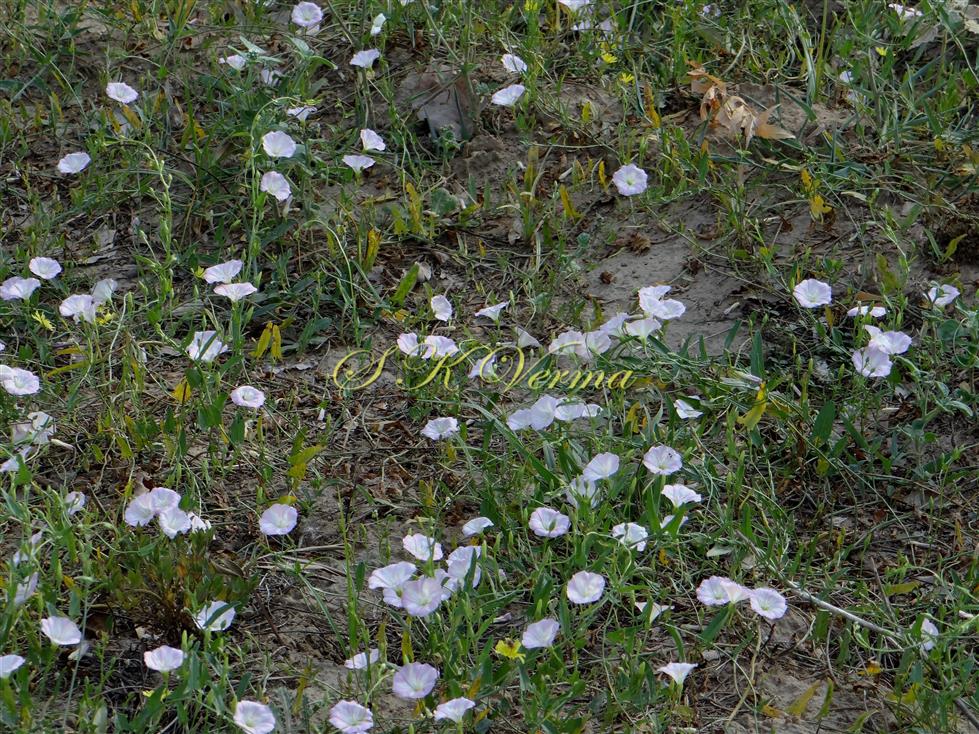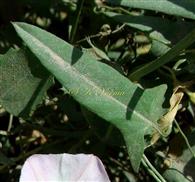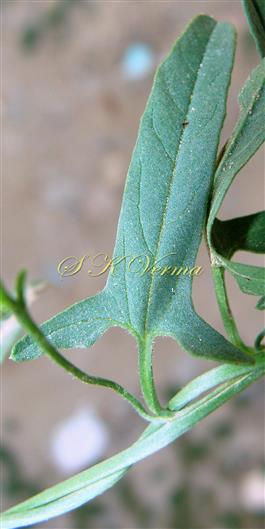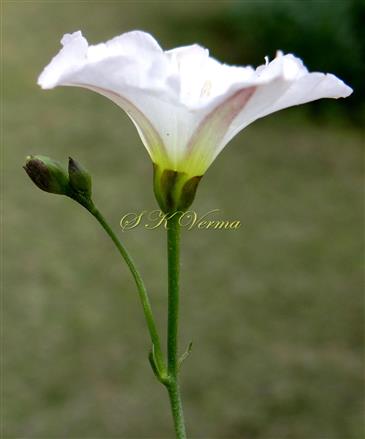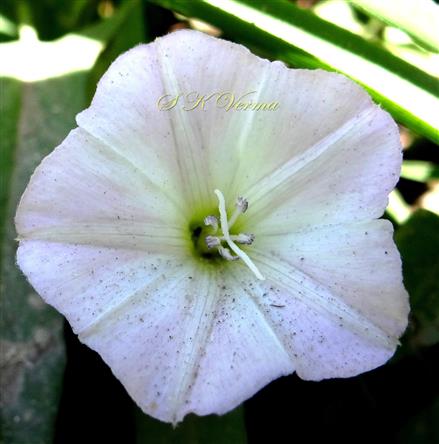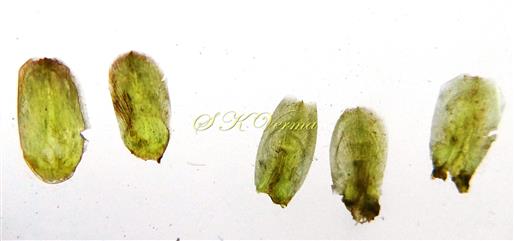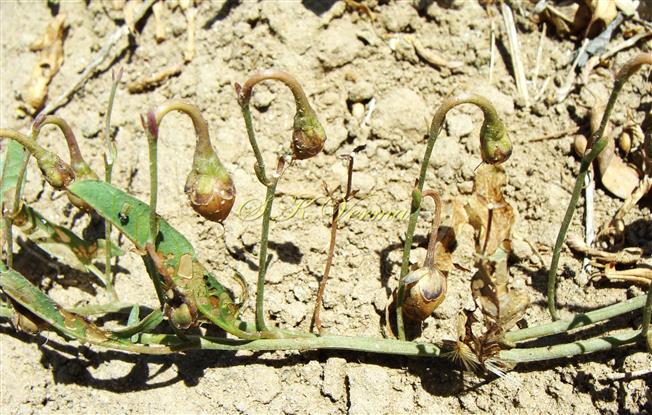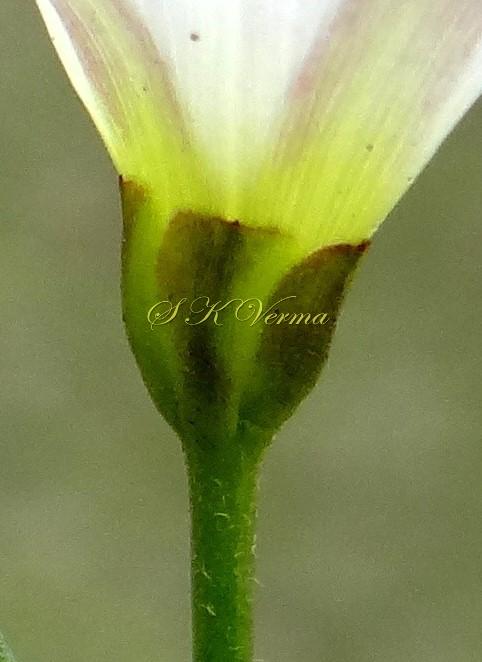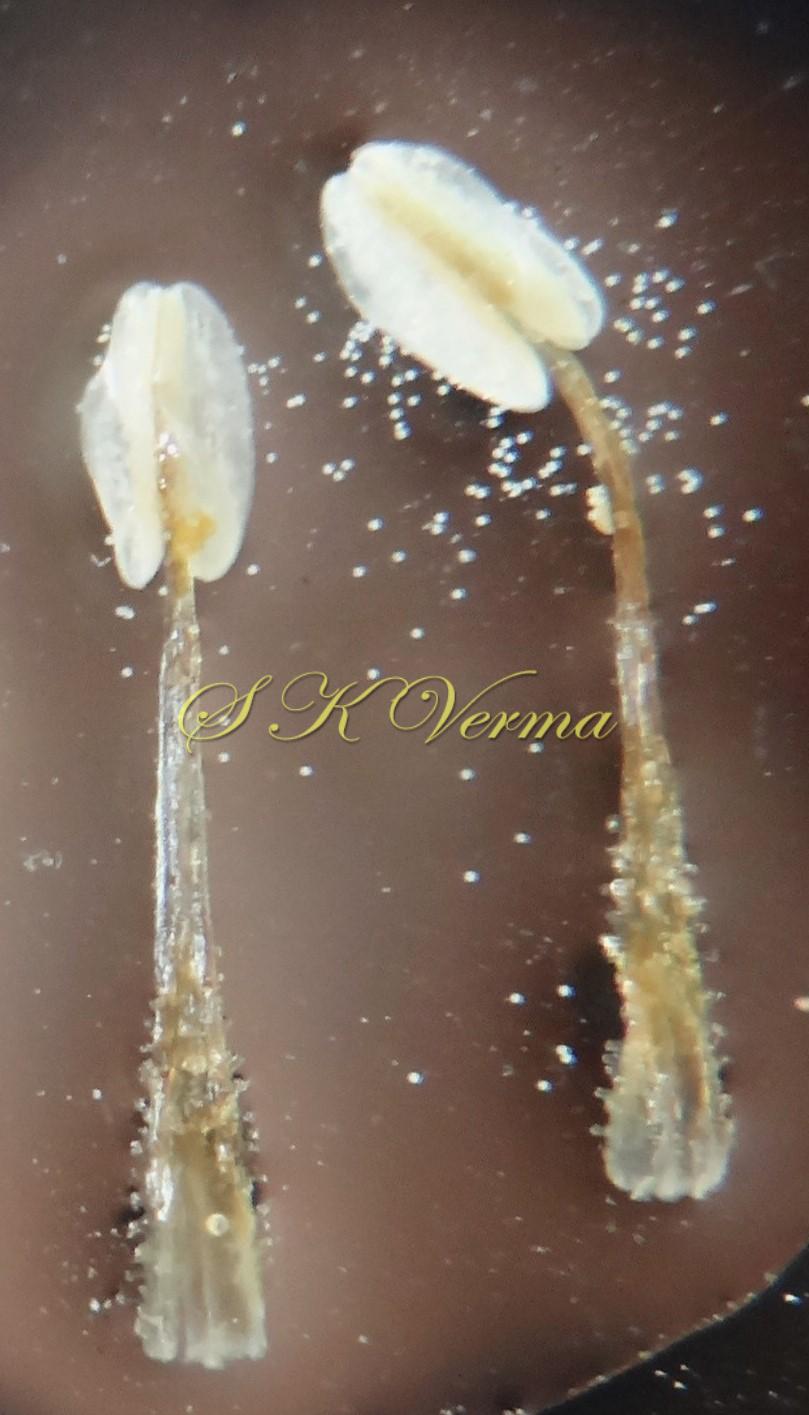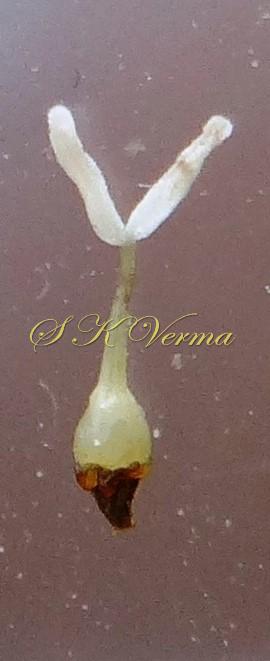CONVOLVULUS
Convolvulus
L., Sp. Pl. 1. 153. 1753; Gen. Pl. ed. 5: 76. 1754; Boiss., Fl. Or. 4: 84. 1879; Clarke in Hook. f., Fl. Brit. Ind. 4: 217. 1885; Parker, For. Fl. Punj. ed. 1: 445. 1918 (Reprint 1973); Fl. China @ eFloras.org 16: 289; Ghazanfar, Fl. Pak @ eFloras.org p. 7.
Plants annual or perennial, prostrate, erect or straggling or twining herbs or cushion-like or erect shrubs; axial parts usually pubescent, hairs simple or 2-armed, spinous or not. Leaves alternate, simple, petiolate or sessile, margin entire or +/- lobed, often pubescent. Flowers usually actinomorphic, bisexual, 5-merous, hypogynous, bracteate in terminal or axillary cymes, involucral heads or solitary. Sepals 5, free, equal or unequal, middle sepal asymmetric, persistent. Corolla funnelform or campanulate; limb shallowly 5-lobed or entire, with 5 +/- distinct midpetaline bands. Stamens 5, included, inserted at corolla base; filaments dilated basally, gradually subulate. Disc ring-like or cupulate. Pistil included, carpels 2, syncarpous; ovary superior, 2-4 locular, ovules 2 per loculus; style 1, filiform; stigmas 2, linear, cylindric or clavate. Fruit a capsule, 2-4-loculed, 4-valved or irregularly dehiscent. Seeds 1-4, black or brown, often verruculose, pubescent, rarely glabrous.
204 species
Convolvulus arvensis
Convolvulus arvensis
L., Sp. Pl. 153. 1753; Boiss., Fl. Or. 4: 108. 1879; Clarke in Hook. f., Fl. Brit. Ind. 4: 219. 1885; Collett, Fl. Siml. ed. 2: 338. 1921 (Reprint 1980); Sharma & Kachroo, Fl. Jammu 1: 227. 1981; Sharma & Kachroo, Fl. Jammu (Illustr.) 2: t. 188. 1983; Dhaliwal & Sharma, Fl. Kullu Dist. 461. 1999; Kaur & Sharma, Fl. Sirmaur 441. 2004; Singh & Sharma, Fl. Chamba Dist. 481. 2006; Fl. China @ eFloras.org 16: 291; Ghazanfar, Fl. Pak @ eFloras.org p. 28.
Climbing and prostrate, annual or perennial herbs, branching at base. Stem to 2 m long, glabrous to pubescent. Leaves alternate, simple, glabrous to pubescent, 2.2-5 cm x 0.3-3 cm, ovate to broadly oblong or linear to linear-oblong or lanceolate, sagittate to hastate, lobes spreading, acute to obtuse, mucronulate, prominently 3-veined basally, upper part pinnately veined; petiole (3-)9-30 mm long. Flowers solitary or 2-3 cymose, axillary, pedunculate, peduncle 3-8 cm long; bracts linear, ca. 3 mm long. Flowers actinomorphic, bisexual, 5-merous, hypogynous, 1.5-2.3 cm long and ca. 2.5 cm across, pink to lilac with dark purple bands or purple with white or pale yellow centre; pedicels 8-14 mm long, pubescent to glabrous. Sepals 5, free, unequal, scarious, 4-5 mm x 2.5-3 mm, broadly oblong or obovate or ovate, apex obtuse or retuse, margin membranous or ciliate; outer 2 shorter than the inner ones. Corolla campanulate, 2-2.5 cm long; tube very short; limb spreading, ca. 2.5 cm in diameter, obscurely 5-lobed, folding at angles, midpetaline bands pubescent outside distally, lobes mucronate at apex. Stamens 5, included inserted near the bottom of corolla tube; filaments unequal, 5-7 mm long; anthers 2 mm long. Carpels 2, syncarpous; ovary ovoid, 2-locular, 2 ovules per loculus, glabrous, a disc below the ovary; style single, ca. 6 mm long, branching near the top in 2 linear stigmas, stigmas ca. 4 mm long. Capsule globose, ca. 5 mm in diameter, opening by 4-valves. Seeds 4, ca. 4 mm long, dark brown, tuberculate.
Common Names: Bind weed, Field Bind weed; Hiranpug, Hiranpadi (Hindi)
